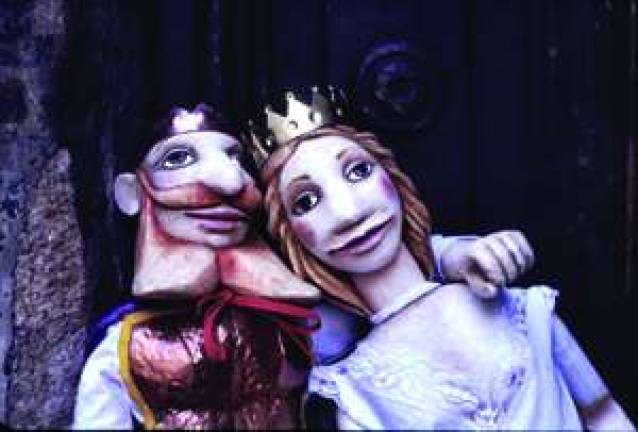Controlling the Strings With Simplicity

By Alissa Fleck For 10 days this August, the Czechoslovak-American Marionette Theatre will perform The White Doe, or The Piteous Trybulations of the Sufferyng Countess Jenovéfa at the Bohemian National Hall on the Upper East Side. Vít Horej?, one of the co-founders and core members of the Theatre, runs rehearsals out of his studio in Dumbo. With a background in acting, Horej? says puppeteering is similar to stepping into character. "In puppet theatre you are there with puppets, so you can double up and be a character and the puppet can be a character, and you can have a dialogue," Horej? said. Horej? was born and educated in Czechoslovakia, where he graduated with degrees in French and philosophy and studied theater. His interest in puppeteering stems from his mother's study of the art form. Horej? left Prague in 1978 because of the political situation there. After arriving in the United States, he worked as a cab driver before rising in the theater world, joining a black light theater company and toured worldwide. Performing as a storyteller at Jan Hus church on the Upper East Side, Horej? heard rumors of a puppet theater formerly housed there. That led him to investigate the whereabouts of those sleeping puppets. In true fairytale style, Horej? found 24 large marionettes, 24-30 inches in size, and 45 small toy marionettes in an old chest in the church attic. The marionettes were between 100-200 years old. At the time of the discovery, Horej? had only three marionettes and was working on performing Goethe's Faust. Horej? soon began mixing marionettes into his storytelling at Jan Hus. It took six years for him to quit the black light theater company, heeding the calling of the puppets he'd discovered in the attic. With another Czech puppeteer, Jan Unger, Horej? began focusing primarily on puppeteering. The Czechoslovak-American Marionette Theatre currently performs traditional and non-traditional puppetry. The Theatre's traditional marionette plays are White Doe, Faust and Don Juan. Horej? described the traditional pieces as plays that were written and orally traded in puppeteering families and not recorded until the 19th century. Horej? translated those pieces and they are performed in the traditional style, with curtains and a proscenium. Puppeteers remain behind the backdrop, but occasionally performers will "give it a little twist." Nontraditional shows are based on old material but mix in live performance, incorporating everything from traditional music to jazz and rock. Horej? said the audience for shows consists primarily of adults but described their upcoming show as "accessible for children." "When we did Hamlet, children would come because people think marionettes are for children," said Horej?. "And to tell you the truth, my daughter was a 6-year-old when we did Hamlet and knew some songs by heart and some lines by heart and loved it-and other kids did too." Horej? is not worried about the art disappearing anytime soon. "I was greatly inspired by Drak Theatre in Eastern Bohemia," he said. "I saw them when I was in my twenties and they were doing this thing where they mixed live people with marionettes-they really amazed me and made me think the puppet tradition can still be alive that way. Before that I was skeptical about whether puppeteering can survive. Since then, as you see, I caught the bug myself." The White Doe runs Aug. 8-18 at Bohemian National Hall, 321 E. 73rd St. (betw. 1st & 2nd Aves.). For more information, visit czechmarionettes.org.